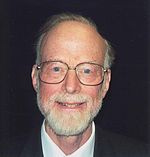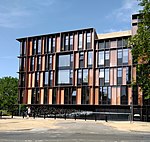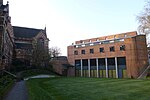Department of Materials, University of Oxford

The Department of Materials at the University of Oxford, England was founded in the 1950s as the Department of Metallurgy, by William Hume-Rothery, who was a reader in Oxford's Department of Inorganic Chemistry. It is part of the university's Mathematical, Physical and Life Sciences Division Around 190 staff work in the Department of Materials full-time, including professors, lecturers, independent fellows, researchers and support staff. There are around 30 academic staff positions of which four are Chairs. The Isaac Wolfson Chair in Metallurgy was set up in the late 1950s. Sir Peter Hirsch formerly held the chair. The current holder of the chair is Peter Bruce FRS. Other Chairs in the department include the Vesuvius Chair of Materials held by Patrick Grant FREng, Professor in the Physical Examination of Materials formerly held by David Cockayne FRS and the James Martin Chair in Energy Materials held by James Marrow.Research is done in the broad fields of structural and nuclear materials, device materials, polymers and biomaterials, nanomaterials, processing and manufacturing, characterization, and computational materials modelling. The department offers undergraduate degrees in Materials Science and Materials, Economics and Management, having around 160 undergraduates, and around 240 postgraduate students, particularly DPhil students pursuing advanced research.In addition to its own buildings, the department shares seven buildings with the Department of Engineering Science on a triangular plot with Banbury Road to the west and Parks Road to the east. In addition, the department has extensive facilities at Begbroke Science Park, north of the city, which was purchased and founded on behalf of the university by Professor Brian Cantor when he was head of the department in the 1990s.
Excerpt from the Wikipedia article Department of Materials, University of Oxford (License: CC BY-SA 3.0, Authors, Images).Department of Materials, University of Oxford
Parks Road, Oxford City Centre
Geographical coordinates (GPS) Address Nearby Places Show on map
Geographical coordinates (GPS)
| Latitude | Longitude |
|---|---|
| N 51.7603685 ° | E -1.2592798 ° |
Address
Keble Triangle
Parks Road
OX1 3AQ Oxford, City Centre
England, United Kingdom
Open on Google Maps











